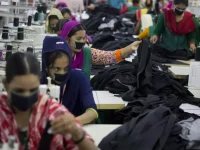World food day – 16 october 2013: Healthy people depend on healthy food systems

UN. Geneva, 16 October 2013. What’s more, different types of malnutrition can coexist within a country, a household or even an individual.
Malnourished women are more likely to give birth to smaller babies, who start life with a higher risk of physical and cognitive impairment. In fact, maternal malnutrition is one of the main ways that poverty is transmitted from generation to generation.
At the same time, obese parents may suffer from vitamin deficiencies themselves and their children may be stunted because of low birth weight and
poor care and feeding practices. Stunted children may even have a greater risk of developing obesity and related diseases in adulthood. Most countries in the world face many types of malnutrition.
The cost to the global economy caused by malnutrition – as a result of lost productivity and direct health care costs – could account for as much
as 5 percent of global income. That is equivalent to US$3.5 trillion per year or US$500 per person.
Wiping out malnutrition worldwide is a daunting challenge, but the return on investment would be high. If the global community invested US$1.2 billion per year for five years on reducing micronutrient deficiencies, for example, the results would be better health, fewer child deaths and increased future earnings. It would generate annual gains worth US$15.3 billion – a benefit-to-cost ratio of almost 13 to 1.
http://www.fao.org/fileadmin/templates/getinvolved/images/WFD_issues_paper_2013_web_EN.pdf










